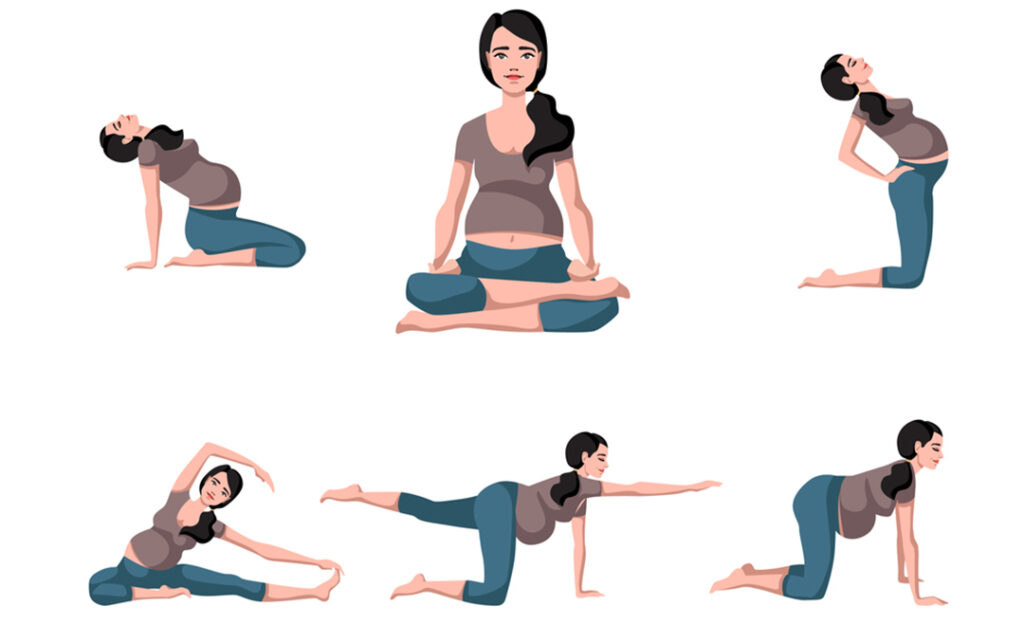Back
Safe and Effective Exercises for Pregnant Mommies
By Shannon Strauch, PTA, STMT-1 on 8/27/2024

Staying active during pregnancy is essential for maintaining your physical and mental well-being. Exercise can help reduce common pregnancy discomforts, prepare your body for childbirth, and improve postpartum recovery. Here are some safe and effective exercises to perform during pregnancy that can help you stay strong and healthy.
**1.
Pelvic Tilts:
How to Do It
: Stand with your back against a wall, gently flatten your lower back against the wall by tilting your pelvis forward. Hold for a few seconds and release.
Benefits
: Strengthens the abdominal muscles, relieves lower back pain, and improves pelvic alignment, which is crucial as your baby grows.
**2.
Kegels:
How to Do It
: Sit or stand comfortably, contract your pelvic floor muscles as if you’re trying to stop the flow of urine. Hold for a few seconds, then relax. Repeat several times.
Benefits
: Strengthens the pelvic floor muscles, which support the uterus, bladder, and bowels. This exercise can help prevent urinary incontinence and aid in postpartum recovery.
**3.
Cat-Cow Stretch:
How to Do It
: Start on all fours, with your wrists under your shoulders and knees under your hips. Inhale and arch your back (cow), then exhale and round your back (cat). Repeat the movement slowly and gently.
Benefits
: Improves flexibility in the spine, relieves back tension, and promotes mobility, which can be especially helpful as your body changes.
**4.
Squats:
How to Do It
: Stand with feet shoulder-width apart, lower your hips down as if you’re sitting in a chair, keeping your back straight and knees behind your toes. Rise back up to the starting position.
Benefits
: Strengthens the thighs, hips, and pelvic floor. Squats can also help prepare your body for labor by opening up the pelvic area.
**5.
Glute Bridges:
How to Do It
: Lie on your back with knees bent and feet flat on the floor. Lift your hips towards the ceiling while squeezing your glutes, then lower back down.
Benefits
: Strengthens the glutes, lower back, and core, providing stability to the pelvis and relieving lower back pain.
**6.
Side-Lying Leg Lifts:
How to Do It
: Lie on your side with legs straight, lift your top leg up, and lower it back down. Switch sides after completing a set.
Benefits
: Strengthens the outer thighs and hips, which support the pelvis and help maintain balance as your body changes.
**7.
Arm Circles:
How to Do It
: Stand with your feet shoulder-width apart, extend your arms out to the sides, and make small circles with your arms. Gradually make the circles larger.
Benefits
: Strengthens the shoulders and improves circulation, helping to prevent stiffness and tension in the upper body.
**8.
Prenatal Yoga:
How to Do It
: Participate in a prenatal yoga class or follow a prenatal yoga video at home, focusing on gentle poses that stretch and strengthen the body.
Benefits
: Enhances flexibility, reduces stress, improves breathing techniques, and prepares the body for labor.
**9.
Walking:
How to Do It
: Aim for a brisk 20-30 minute walk each day, making sure to wear supportive shoes.
Benefits
: Promotes cardiovascular health, boosts mood, and helps maintain a healthy weight during pregnancy. Walking is a low-impact exercise that’s easy to incorporate into your daily routine.
**10.
Child's pose, with hip Internal Rotation (IR):
How to Do It
: Start on your hands and knees, put your feet outwards in order to internally rotate the hips. From there, sit your hips back towards your heels, reaching your arms forward. Stay in this position, relax and breathe.
Benefits
: Childs pose will help decrease tightness of posterior pelvic floor muscles, by adding the hip IR you are preparing for your pelvic outlet to open up better during the birthing process.
Conclusion:
Exercising during pregnancy is one of the best ways to maintain your health and prepare your body for the challenges of childbirth. The exercises listed above are designed to strengthen key muscle groups, improve flexibility, and support your overall well-being. Always consult with your healthcare provider before starting any new exercise routine, and listen to your body—if something doesn’t feel right, it’s important to stop and seek guidance.Call to Action:
Take time each day to prioritize your health with these safe and effective exercises. Remember that every pregnancy is unique, so be sure to customize your exercise routine to meet your individual needs and capabilities. Stay active, stay healthy, and enjoy the journey to motherhood! Looking to optimize your well being with pelvic floor physical therapy during your pregnancy? Reach out to us at Pelvic Health Center in Madison, NJ to set up an evaluation and treatment! Feel free to call us at 908-443-9880 or email us at receptionmadison@pelvichealthnj.com.Read More:
How Chronic Pelvic Congestion in Men Contributes to Prostatitis By Shannon Strauch, PTA, STMT-1 on 12/11/2024 How lymphatic issues can cause symptoms of prostatitis Prostatitis and Tight Pelvic Floor Muscles: A Comprehensive Guide By Shannon Strauch, PTA, STMT-1 on 12/10/2024 How a tight pelvic floor can be the reason for prostatitis symptoms
Are you ready to live pain free?
Request An Appointment